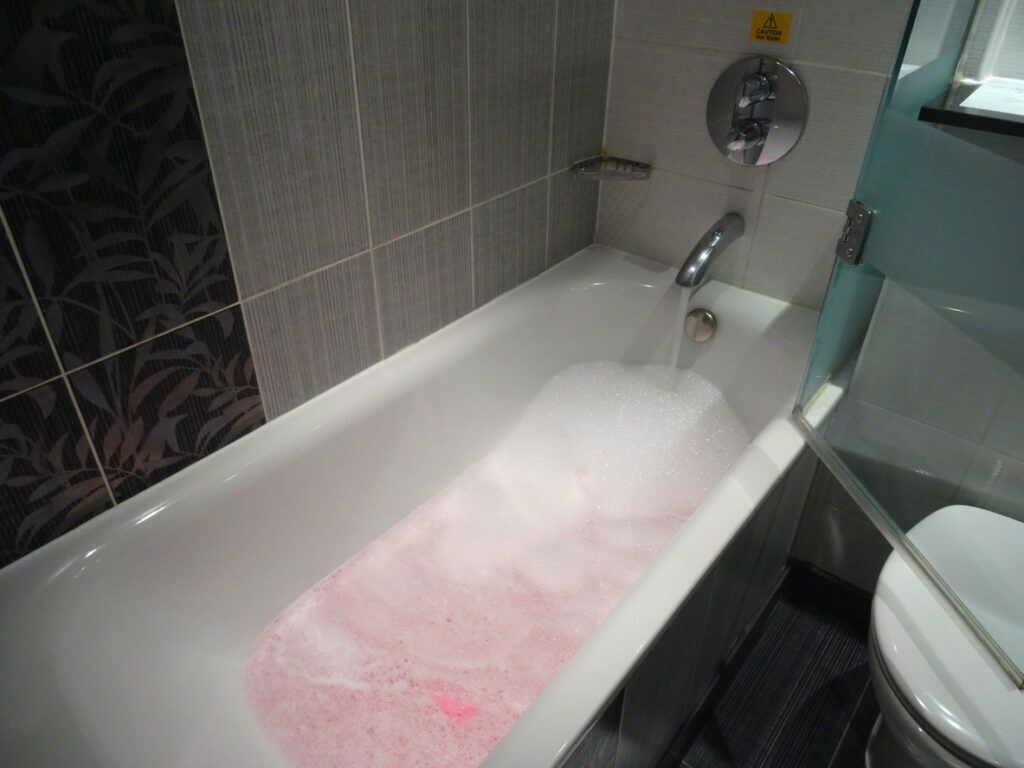They are making a few good pointers on the subject of What To Do If Sewage Starts Backing Up Into the Shower overall in this article underneath.

Sewage back-up in the bathtub can be an upsetting and unsanitary trouble for any type of homeowner. Not just is it troublesome, yet it likewise positions major health and wellness threats and indicates underlying problems with the plumbing system. Comprehending why sewage is coming up with the tub is vital for taking appropriate activity to address the issue effectively.
Intro to the Concern
Typical Factors for Sewage Back-up
Blockages in the Sewer Line
Among the most usual sources of sewer back-up is a clog in the sewage system line. This can occur as a result of the buildup of particles, grease, or international things in the pipes, preventing appropriate circulation and creating sewer to back up into your tub.
Tree Root Invasion
Tree roots looking for dampness and nutrients can infiltrate drain lines with tiny splits or joints. In time, these roots can expand and increase, creating significant damages to the pipelines and leading to sewage backup concerns.
Recognizing the Issue
When sewage starts backing up into the bath tub, it's a clear indication of a problem with the water drainage system. The wastewater that must be streaming far from your home is rather locating its back into your space, which can cause considerable damages and health hazards.
Potential Reasons
Several aspects can add to sewage backup in the tub. From clogs in the drain line to issues with the plumbing facilities, determining the origin is necessary for discovering a remedy.
Aging Framework
Older homes may have obsoleted plumbing systems that are much more vulnerable to rust, fractures, and deterioration. As pipelines age, they come to be extra prone to leaks and blockages, enhancing the likelihood of sewer backup incidents.
Heavy Rainfall or Flooding
Throughout durations of heavy rainfall or flooding, the sewer system may end up being overloaded with excess water, triggering backups and overflows. This can cause sewer supporting right into bath tubs and other fixtures inside the home.
Signs of Sewer Back-up
Foul Odors
Undesirable smells rising from drains pipes or components, specifically in the shower room, may show sewage back-up issues. These odors are often strong and consistent, signaling a trouble that requires instant attention.
Slow Draining Fixtures
Tubs, sinks, and toilets that drain pipes slowly or not in all could be experiencing sewage back-up. If multiple fixtures are affected at the same time, it's likely that the problem stems from a common point, such as the major sewer line.
Gurgling Sounds
Strange gurgling or bubbling noises originating from drains pipes when water is running elsewhere in your home are indicative of air entraped in the plumbing system. This air buildup can arise from sewage backup and need to be investigated promptly.
Health And Wellness Risks Associated with Sewage Backup
Contamination of Supply Of Water
Sewage back-up can pollute the supply of water in your house, positioning a severe health and wellness threat to you and your household. Direct exposure to polluted water can cause gastrointestinal concerns, skin infections, and other diseases.
Mold Growth
Moisture from sewer back-up can produce excellent conditions for mold growth in your house. Mold and mildew spores can exacerbate respiratory problems and cause allergies in sensitive people, making punctual clean-up essential.
Spread of Disease
Sewage has damaging microorganisms, viruses, and parasites that can create a variety of diseases, including liver disease, cholera, and gastroenteritis. Coming into contact with sewer or polluted surfaces places you in jeopardy of infection.
Cleaning Up After Sewer Backup
Sanitation Procedures
Extensively disinfect and disinfect affected areas after sewage backup to get rid of damaging microorganisms and avoid mold development. Use ideal cleansing items and safety equipment to ensure safe and reliable clean-up.
Reconstruction of Impacted Locations
Fix any kind of damages to flooring, wall surfaces, or fixtures triggered by sewage backup. Relying on the degree of the damage, you may require to change carpets, drywall, or other materials to restore your home to its pre-loss condition.
Immediate Actions to Take
Switching Off Water
In case of sewer back-up, it's necessary to turn off the water supply to stop additional contamination and damages. Situate the primary water shutoff valve in your home and closed it off up until the problem can be dealt with.
Getting In Touch With an Expert Plumber
Dealing with sewage backup is not a DIY job. Get in touch with a licensed plumber with experience in managing sewage-related concerns to evaluate the situation and perform essential repairs or cleanups.
Avoiding Contact with Contaminated Water
Till the sewage back-up is settled, stay clear of contact with polluted water to prevent the spread of microorganisms and virus. Use protective equipment if you must remain in the afflicted area and clean your hands completely afterward.
Safety nets
Routine Maintenance of Sewer Lines
Arrange regular assessments and upkeep of your drain lines to identify and deal with possible concerns prior to they intensify into significant problems. This can include cleaning out particles, examining for tree origin intrusion, and fixing any kind of damaged pipes.
Installing Bayou Shutoffs
Consider setting up bayou shutoffs in your plumbing system to prevent sewer from receding into your home during periods of heavy rainfall or flooding. These shutoffs instantly close when water draws back up, securing your building from contamination.
Correct Disposal of Family Waste
Prevent flushing anything other than toilet paper and human waste down the bathroom to avoid blockages and obstructions in the drain line. Dispose of grease, oil, and various other family chemicals effectively to reduce the risk of plumbing issues.
Why Is Water Backing Up in My Bathtub When I Flush My Toilet?
What to do about a sewer line clog
First, don’t bother with plunging. No amount of plunging will dislodge the clog in a sewer line. The clog is too far away. Plungers are for clogs in the toilet itself, not the sewer line. Plus, the most likely causes of a sewer clog are:
Tree roots Flushed toys or feminine products Grease buildup Those items don’t move easily. And in the case of tree roots, the roots need to be cut out of the pipe and the pipe will need to be repaired.
You’ll need a closet auger. A closet auger is a type of plumber’s snake with a protective cover to keep from scratching the delicate porcelain toilet. If the clog is further down, you may need to remove the toilet or use one of your cleanouts to get to the clog.
We also recommend doing a video inspection of the drain to ensure that the cause of the clog has been completely removed. Otherwise, you could have the same problem again in a few days or weeks.
https://mspplumbingheatingair.com/blog/why-is-water-backing-up-in-my-bathtub-when-i-flush-my-toilet

I ran across that article about Why is There Sewage Coming Up Through the Bathtub while doing a lookup on the search engines. Are you aware of somebody else who is fascinated by Why sewage is coming up through your bathtub? Feel free to share it. Thanks a lot for your time. Please come visit our blog back soon.
Call Today